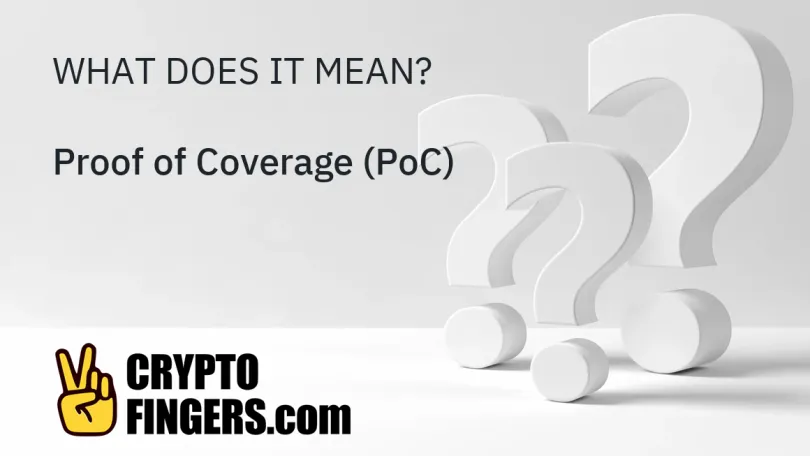⁝⁝⁝
Blockchain & Crypto Glossary
Proof of Coverage (PoC) is a consensus mechanism employed by the Helium Network. As a variation of Proof of Work (PoW), PoC relies on mining to achieve network consensus..
Proof of Contribution (PoC) is a consensus mechanism that is based on user contributions to the network. This process works by using specialized algorithms that monitor contributions of all..
Proof of Capacity (PoC) is a consensus mechanism that uses a miner's available hard drive space to decide its mining rights and ability to validate transactions. Through the PoC mechanism..
Through the Proof-of-Burn (PoB) consensus mechanism, miners intentionally destroy or "burn" tokens/coins to obtain a proportional right to mine new blocks and verify transactions..
Proof of Authority (PoA) is a consensus mechanism utilized by many blockchain networks. PoA was originally created by Gavin Wood, co-founder of Ethereum and former Chief Technology Officer..
Proof of Acccess (PoA) is the consensus mechanism of the Arweave Protocol. In order to mine or verify a new block, miners must provide cryptographic proof that they have access to a recall..
Programmability is the ability for a computerized system to be created through the process of software development (utilizing various types of programming languages) by writing informatic..
A profit and loss (P&L) statement is a financial statement that summarizes revenue, expenses, and costs for a specific time period. A P&L statement is one of three main financial statements..
Profit and loss (P&L) is a macro-level measurement of how much capital has been gained or lost through trading for an individual or institution. P&L is an important datapoint..
The production version of a software release, which is sometimes also called the stable release, is the last release candidate (RC) version that has passed all testing to bring it..
⁝⁝⁝
Trending news
- Artificial Intelligence (AI)
- Altcoins
- Bitcoin
- DeFi
- Ethereum
- Economy
- Market and Events
- Metaverse
- Mining
- NFT
- Regulation
- Web3
- show less
⁝⁝⁝ Test your knowledge



























